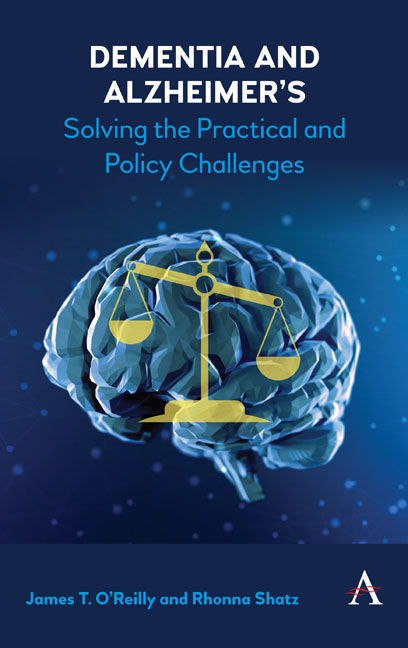Book contents
- Frontmatter
- Contents
- 1 Introduction
- 2 The family dynamics of dementia
- 3 Tort liability related to dementia
- 4 Dementia and private insurance
- 5 Medicare, Medicaid, disability and other government benefits
- 6 Dementia and residential care facilities
- 7 Adult protective services in dementia cases
- 8 Dementia and financial issues
- 9 Dementia in probate and guardianship
- 10 Dementia and employment issues
- 11 Drug research and new product developments for dementia
- 12 Dementia and criminal justice
- 13 Understanding your expert's advice about brain deterioration
- 14 Understanding the causes of Alzheimer's disease
- Appendix: Finding medical reference sources about dementia
- Index
13 - Understanding your expert's advice about brain deterioration
- Frontmatter
- Contents
- 1 Introduction
- 2 The family dynamics of dementia
- 3 Tort liability related to dementia
- 4 Dementia and private insurance
- 5 Medicare, Medicaid, disability and other government benefits
- 6 Dementia and residential care facilities
- 7 Adult protective services in dementia cases
- 8 Dementia and financial issues
- 9 Dementia in probate and guardianship
- 10 Dementia and employment issues
- 11 Drug research and new product developments for dementia
- 12 Dementia and criminal justice
- 13 Understanding your expert's advice about brain deterioration
- 14 Understanding the causes of Alzheimer's disease
- Appendix: Finding medical reference sources about dementia
- Index
Summary
What is the “state of the art” of defining the start and stages of dementia?
These chapters and the appendices enable the counselor to interact more effectively with the expert medical advisor in preparation of a dementia-related issue. Most of the earlier chapters have dealt with the impairment of brain functions and how these impairments will interact with legal requirements. Now we bring the reader behind the curtain into the realm of experts discussing the “why” and “what” of brain problems.
The development of cognitive impairment is a chronic process, with its underpinnings during pregnancy (in-utero) and its final undoing from a mix of genetic, environmental and systemic factors.
The risk of future impairment starts during the neural development of the fetus, and continues throughout a person's lifetime. However, for most individuals, dementia, the feared end of this process, is not determinant, possibly preventable and, at a minimum, modifiable.
Cognition is the sum total of a number of individual brain functions including:
• simple attention (focus);
• sustained attention (concentration);
• speed of processing;
• cognitive flexibility, set shifting especially in response to rules (“multitasking”);
• organizing and sequencing of actions (praxis);
• language (grammar and semantics);
• memory (episodic, working, procedural, semantic);
• visual-spatial abilities (construction, perception); and
• processing through the five senses (gnosis).
These functions have been localized to specific regions in the brain, termed “centers,” and then they are subcategorized based on one of several systems of parcellation:
• surface anatomical landmarks (e.g. frontal lobe, temporal lobe, angular gyrus, perisylvian region),
• specific histologic characteristics of underlying brain tissue (Brodman's areas) or
• neurotransmitter profiles (e.g. acetylcholine, dopamine, norepinephrine).
Traditionally, abnormalities in brain function were characterized by lesion location and the specific Brodman center/s involved, but it became increasingly apparent that this model could not explain progressive diseases, such as the dementias. Pathologies and symptoms evolved in dementias in a characteristic pattern; but there was no mechanism to explain the stereotyped progression. In addition, the predisposition of some persons to dementias, both from environmental and genetic influences, phenotypic variants and very early “preclinical” stages of cognitive change, could not be explained based on the study of individual brain centers.
- Type
- Chapter
- Information
- Dementia and Alzheimer'sSolving the Practical and Policy Challenges, pp. 101 - 110Publisher: Anthem PressPrint publication year: 2019



